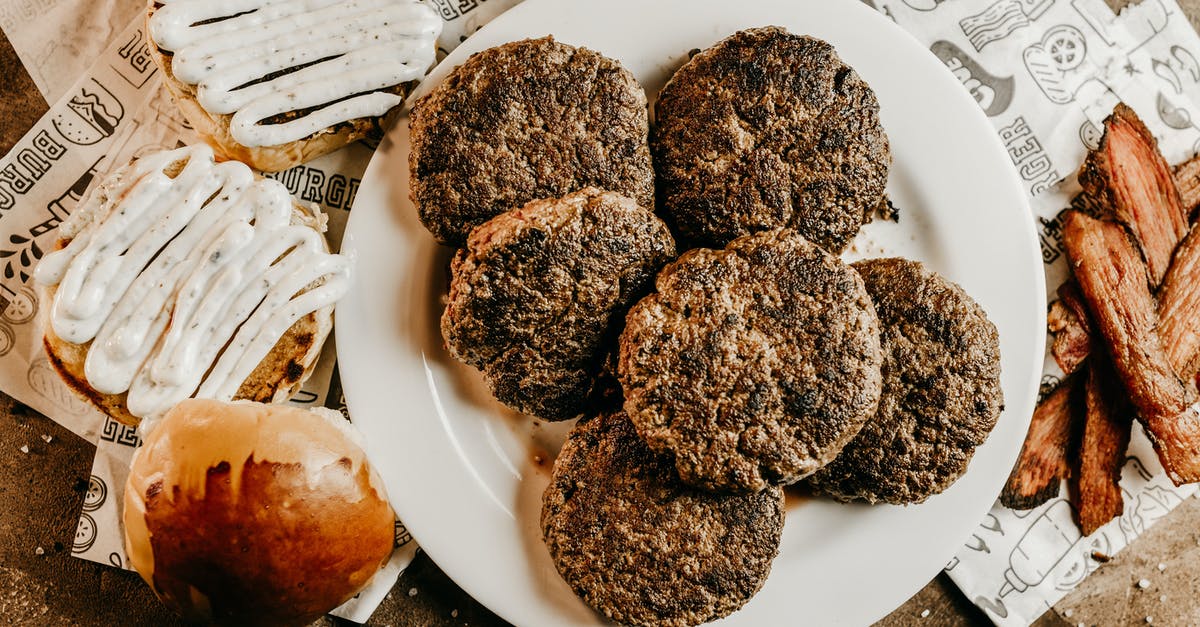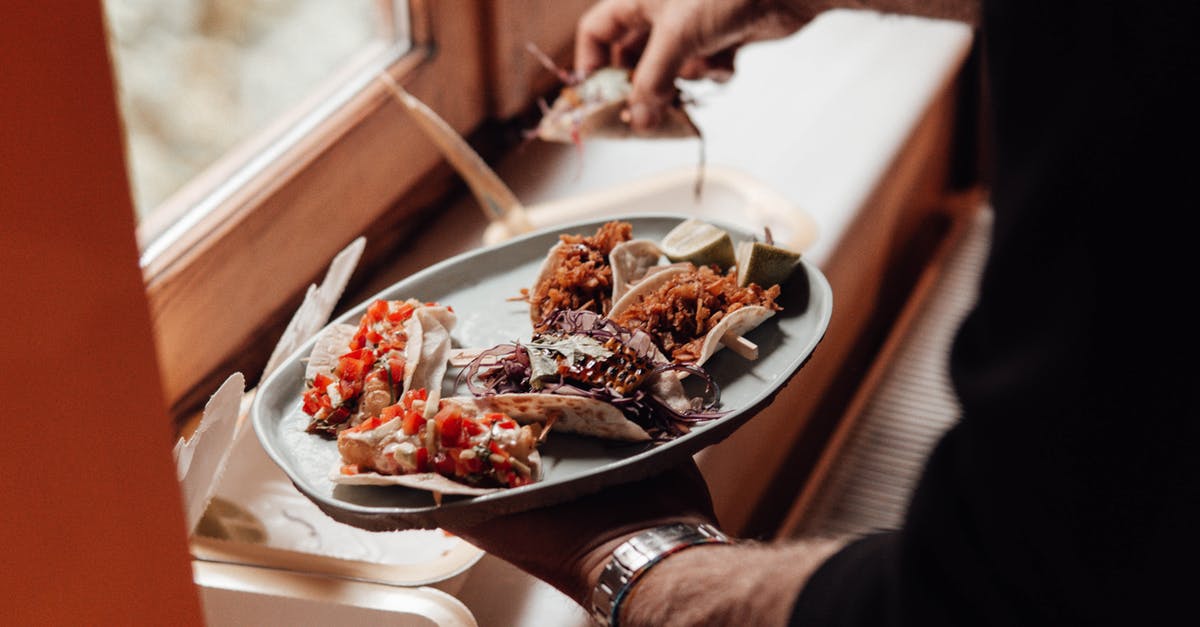Does freezing meat lead to differences detectable by blind testing?

"Fresh" meat tends to be coveted relative to frozen meat. I'm not inquiring about the debate of frozen vs. fresh, but rather am wondering about the potential magnitude of the differences between fresh and frozen meat.
Imagine a scenario in which a person buys a whole striploin, or chicken, or salmon, and freezes half of it. Later on, the meat is thawed and it is cooked alongside the fresh (never frozen) meat, and a taste test takes place comparing the fresh vs. frozen meat.
Is the effect of freezing meat so large that it can be detected by blind testing? I'm looking to get into freezing meat and am hoping that it has a very minimal impact on flavors and texture, assuming I do it correctly.
Best Answer
Meat is... complicated. There are many factors here, but it helps to have an understanding of why freezing affects meat at all.
The first impact is textural: ice crystals that form during freezing damage cell membranes within the meat. This primarily affects the muscle fibers that give meat its primary structure; connective tissues are tougher and less susceptible to damage (and breaking them down is usually considered desirable anyway) and fat contains less water in the first place. In extreme cases meat badly damaged by freezing can develop a "mushy" texture.
The second impact is that metabolic processes within the meat aren't completely stopped by freezing, just drastically slowed. From the same source linked above:
Meat freezes at 28° F (-2° C) but to freeze all water present inside of the meat we have to create temperatures of -8°-22° F (-22°-30° C), which is well beyond the range of a home refrigerator.
At the typical temperatures of a home freezer, the complex amino acids which give meats their distinctive flavors can continue to break down, although slowly. Some could potentially be damaged by the freezing process itself. Since the flavor of meat can vary substantially depending on the cut and how the animal was raised (including what it ate while alive) it's difficult to provide a single definitive answer here.
From a practical perspective this means that you should attempt to limit the damage caused by freezing in the first place:
- Freeze as quickly as possible, to limit the amount of time ice crystals have to form. Start from meat at refrigerator temperature, and set your freezer as low as possible. (A blast chiller is really the ideal way to freeze, but impractical for the home chef.)
- Store your meat properly. It should be tightly wrapped, ideally vacuum-sealed in impermeable food-grade plastic. Air gives ice crystals space to form, insulates the meat so that it freezes more slowly, and can allow the outer surface of the meat to dry out causing freezer burn, so remove as much air as possible. Keep the temperature low and constant; you don't want any potential thawing and re-freezing (which will form new ice crystals, causing additional internal damage).
- Select meats that freeze and store well. Fish and seafood in general, for example, are easily damaged by freezing because they contain more water. In my experience leaner cuts such as chicken breast or pork loin are also more susceptible to damage, presumably because they contain mostly muscle fiber with less connective tissue or fat.
- Use and cook the meat within a reasonable amount of time; say 3-6 months as a general guideline. Frozen meat is safe for much longer periods if kept frozen, but its quality will degrade over time unless it's kept at super-low temperatures in industrial-grade equipment (which I'm assuming you don't have, as with the blast chiller).
It turns out that you can in fact freeze and thaw meat with results pretty close to fresh! But in the context of a blind taste test, to determine whether these results are detectable by tasters, there are other things to consider:
- What cut of meat is being tasted? As mentioned above, certain meats are more easily damaged by freezing; any damage caused should be more easily detected. The gold standard for this is possibly sushi-grade fish served sashimi style. Conversely, naturally tougher cuts (flank steak, lamb leg, and so on) could even subjectively benefit from mild freezer damage, assuming no major freezer burn or other storage issues.
- How will the meat be prepared? A rare steak will showcase the quality of the meat, and serves as a more "direct" taste test. By contrast, the muscle fibers in something like pulled pork are by definition overcooked, to the point where collagen breaks down into gelatin. Any damage to the muscle fibers caused by freezing will likely be obscured by the cooking process itself and less detectable to the taster.
- Finally, who is doing the tasting? An expert will almost certainly be able to detect subtler differences between frozen and fresh meat than a neophyte. A chef who runs a world-renowned steakhouse will likely have a keener palate than your uncle Ted who eats his steak well-done with ketchup.
I'm not aware of any research that has attempted to untangle or examine these factors; there might be something out there, and I encourage more enterprising or well-read members of the community to edit in references where applicable. But I hope this suffices to answer your general question: assuming you freeze properly and carefully, you can avoid much of the damage that will make your meat obviously different from fresh. How large a difference is acceptable will depend on the meat you're freezing, how it's prepared, and the audience you're serving.
Pictures about "Does freezing meat lead to differences detectable by blind testing?"



Does freezing meat change the quality?
If your beef is loosely wrapped and frozen slowly (or frozen marginally), you risk losing the quality of the meat and subject it to freezer burn. When meat is frozen slowly, the water in it turns to ice crystals that grow large and rupture the fibre or muscle cell structure.Does frozen meat taste different to fresh meat?
A proper freezing technique can ensure that frozen meat tastes just as delicious as fresh meat, but you can still expect some slight differences. However, if you don't freeze the meat properly, you can expect the taste, colour, texture, and smell to change, no matter which meat type you're cooking.Why does Freezing meat affect the quality of the meat?
Freezing reduces enzyme activity in meat and poultry and stops the growth of bacteria and molds. It does not tenderize nor sterilize meat.What signs might you see on food if it has been stored in the freezer for too long?
Signs of freezer burn include dark or white dry areas on meats, shriveled produce, or ice crystals on your ice cream.Frozen vs. Fast vs. Fancy Food Taste Test
More answers regarding does freezing meat lead to differences detectable by blind testing?
Answer 2
It depends on the type of meat, the way it was frozen, the public you're cooking for and the way you cook it.
- sausages or any other processed meat with creamy mushroom sauce slathered on top: not so much.
- T-Bone steak grilled until rare: Big difference!
and in-between these two extremes there are 50 shades of grey:
- Would I detect all 50 shades of grey? Probably not
- Would I detect most? Definitely yes
Answer 3
"Is the effect of freezing meat so large that it can be detected by blind testing?"
Yes, in the case of pemmican made from previously frozen beef, it's very obvious. The basic flavor notes don't change much but they become more intense. Both in the protein and the fat, the flavor will become stronger. The texture (mouth feel) also changes - night and day. I think both of these effects are mainly due to the difference in texture.
Pemmican is made of dried meat powder mixed with melted, rendered fat, 50/50 by weight, then allowed to solidify. That's the ancient formula given by Viljhalmur Steffansson, the Arctic explorer who wrote the book on pemmican.
Pemmican made from never frozen, dried and powdered meat has a sandy texture - small grains. Because the muscle cells are not damaged by freezing, they are too strong for the blender blades to shatter them completely. Below a certain size, the meat particles lack the inertia to react against the spinning blades by breaking, and just bounce off. With a 50/50 mix of meat and fat, the pemmican can be formed into stiff cakes. The fat melts in the mouth, leaving a sandy textured mass of fat covered meat particles. The flavor of the meat is overshadowed by the fat.
My pemmican made from previously frozen then dried and powdered meat is much different. The blender blades shatter the meat particles into a fine fluffy powder that looks a little bit like loose fiberglass insulation or chopped up cotton candy. If I mix this 50/50 by weight with fat, it is much too dry. This powder has much greater surface area and because the cell walls are all broken, much more capacity for absorption. Soaks up a lot more fat, so if the pemmican is made with 50/50 protein/fat by weight, it comes out dry, but the beef flavor is more intense due to the greater ratio of surface area to mass of each meat particle.
If I want to avoid a loose texture, I have to add more fat than 50/50, more like 40/60 meat/fat or 45/65. That gives me enough liquid to form the pemmican into blocks that hold together. Because the fibers still have a much greater ratio of surface area to mass, more of their surface is exposed to the taste buds, so the flavor of the meat is more intense, and because the fat amount is greater in any mouthful, there is more of a fat flavor.
Sources: Stack Exchange - This article follows the attribution requirements of Stack Exchange and is licensed under CC BY-SA 3.0.
Images: Mark Neal, Harrison Haines, Jonathan Borba, furkanfdemir

